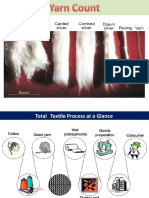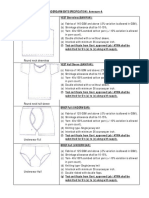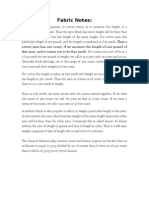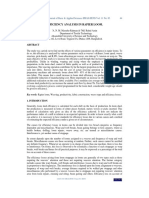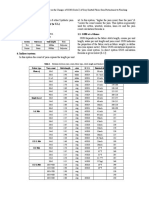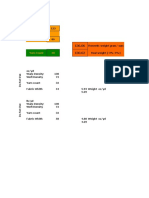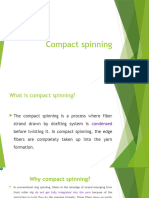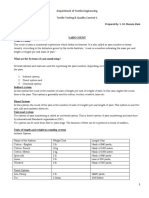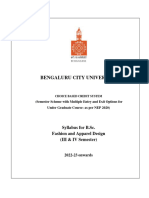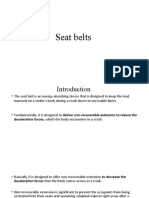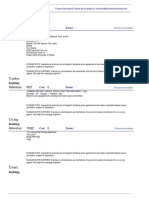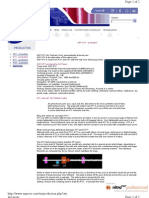0% found this document useful (0 votes)
319 views12 pagesTextile Testing PDF
This document provides an overview of yarn count measuring systems. It discusses yarn count in three sentences: [1] Yarn count refers to the thickness or fineness of yarn and indicates the length of yarn in relation to its weight. [2] There are two main systems for measuring yarn count - analytical which uses calculations and instrumental which uses machines. [3] Under analytical systems, direct systems measure units of weight per length while indirect systems measure units of length per weight.
Uploaded by
Mih Mojumder ShahedCopyright
© © All Rights Reserved
We take content rights seriously. If you suspect this is your content, claim it here.
Available Formats
Download as PDF, TXT or read online on Scribd
0% found this document useful (0 votes)
319 views12 pagesTextile Testing PDF
This document provides an overview of yarn count measuring systems. It discusses yarn count in three sentences: [1] Yarn count refers to the thickness or fineness of yarn and indicates the length of yarn in relation to its weight. [2] There are two main systems for measuring yarn count - analytical which uses calculations and instrumental which uses machines. [3] Under analytical systems, direct systems measure units of weight per length while indirect systems measure units of length per weight.
Uploaded by
Mih Mojumder ShahedCopyright
© © All Rights Reserved
We take content rights seriously. If you suspect this is your content, claim it here.
Available Formats
Download as PDF, TXT or read online on Scribd
/ 12




